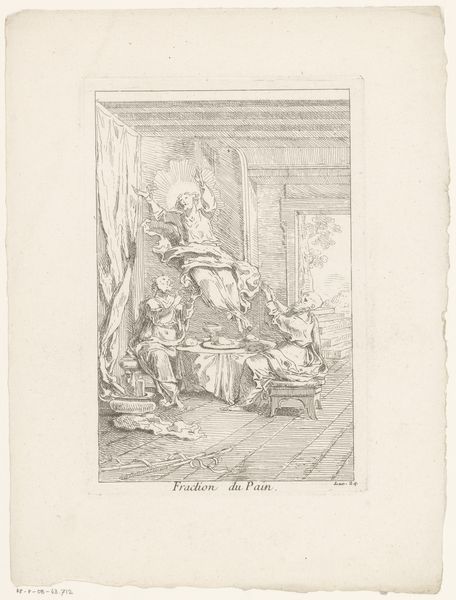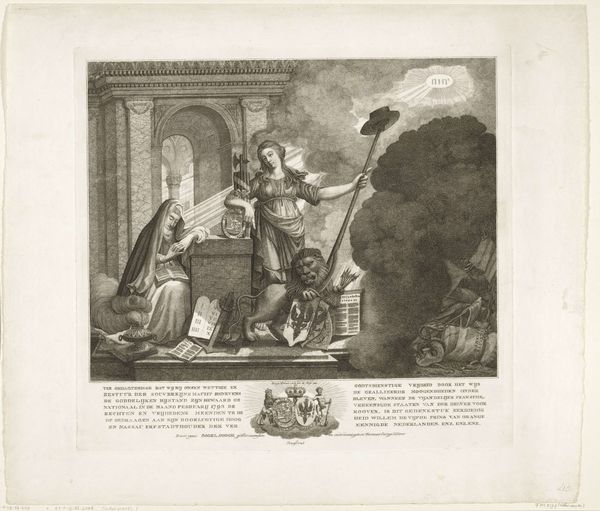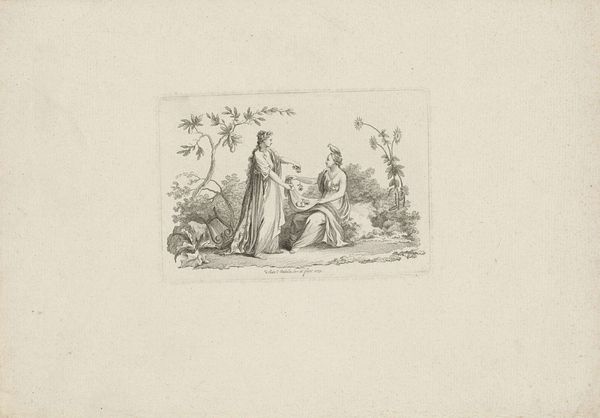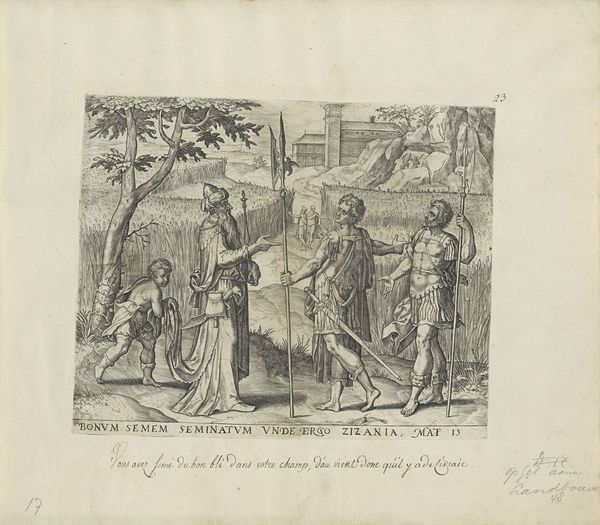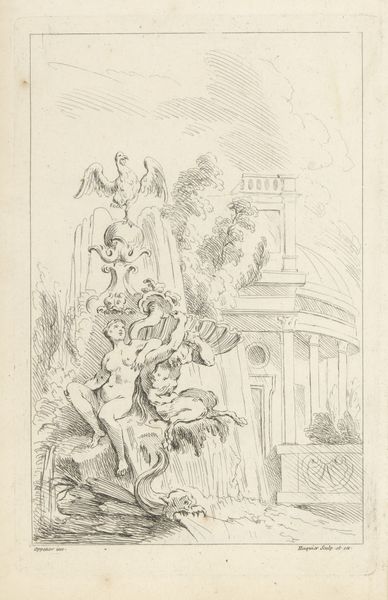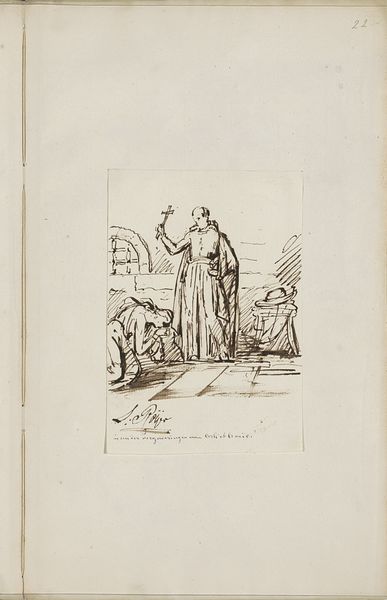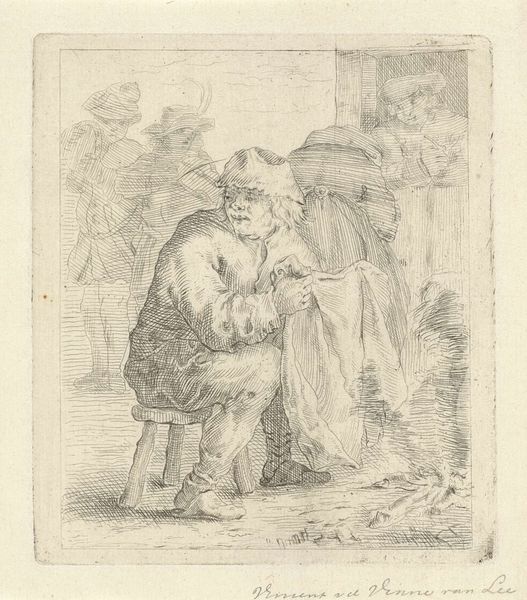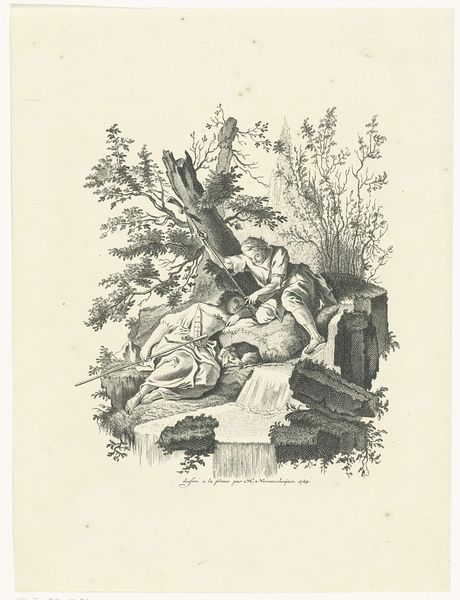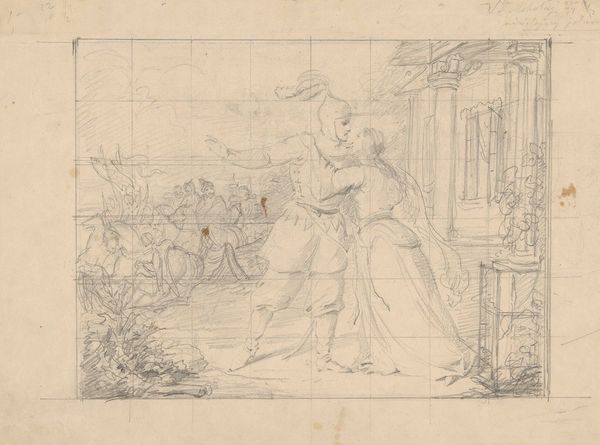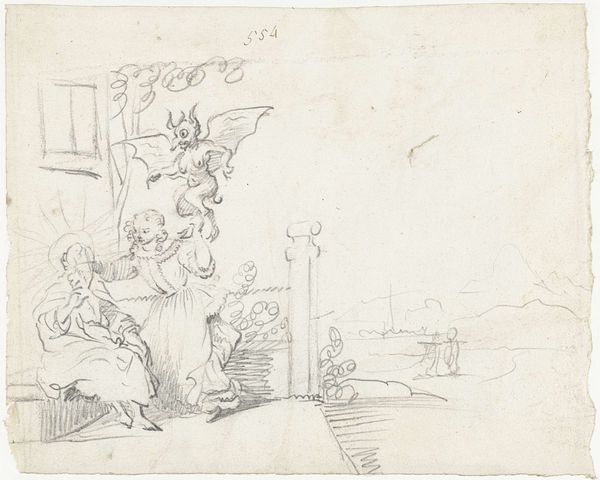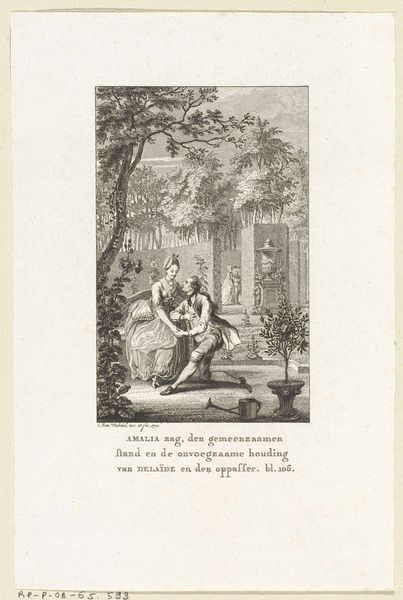
Napoleon zit nadenkend op een stoel terwijl Faam hem wijst op Pluto en verdoemden 1808
0:00
0:00
drawing
#
portrait
#
drawing
#
comic strip sketch
#
neoclacissism
#
quirky sketch
#
allegory
#
sketch book
#
figuration
#
personal sketchbook
#
idea generation sketch
#
sketchwork
#
line
#
sketchbook drawing
#
history-painting
#
storyboard and sketchbook work
#
academic-art
#
sketchbook art
#
initial sketch
Dimensions: height 332 mm, width 382 mm
Copyright: Rijks Museum: Open Domain
Curator: This intriguing drawing, made by Teodoro Matteini in 1808, is titled "Napoleon Thinking on a Chair While Fame Shows Him Pluto and the Damned." It presents a fascinating, albeit perhaps unflattering, allegorical view of Napoleon. What’s your first take? Editor: Immediately, the draftsmanship grabs me. Look at that fine line work, the crisp delineation creating this whole scene with such delicate precision! And the stark contrast between the celestial figure and the underworld scene creates a compelling duality. Curator: Yes, Matteini's piece certainly offers a symbolic commentary on power and legacy during Napoleon's era. Consider the political implications of depicting Napoleon facing his potential damnation even at the height of his power. It hints at anxieties surrounding his ambition and the human cost of his conquests. Editor: I'm more drawn to how Matteini orchestrates our visual reading of the piece. The floating figure of Fame, juxtaposed against that solid, almost oppressive, neoclassical column... the movement versus stability. Plus, the perspective cleverly pulls us from Napoleon's pensive posture toward the chaotic realm of Pluto. Curator: That realm representing damnation is a visual strategy linking Napoleon’s ambition directly to its potential consequences. Artists during this time were deeply engaged in the conversation of Napoleon’s role within Europe’s historical narrative and often leveraged classical allegories. Editor: I see it, and yet… beyond the iconography, there’s a formal elegance I can’t ignore. The composition itself, even with that subject matter, is so classically balanced. Notice how the column anchors the chaotic energy on the right? And consider the artist's masterful use of line to sculpt form and define space. Curator: Agreed. Though ultimately, I believe, Matteini is positioning this work within a broader critique. What is remembered, how one will be remembered, are core issues driving the imagery during a period of seismic historical events. The art acts almost like a public service announcement. Editor: A visual warning, perhaps, encoded in an aesthetic so refined, it's easy to miss the severity of its statement! Ultimately, Matteini's visual vocabulary—the lines, forms, and contrasts—powerfully amplifies his historical narrative. Curator: It shows that art isn’t divorced from society but deeply rooted in its questions, fears, and hopes. Editor: Indeed. The drawing, in its composition and themes, reflects Napoleon's era while also critiquing it.
Comments
No comments
Be the first to comment and join the conversation on the ultimate creative platform.
